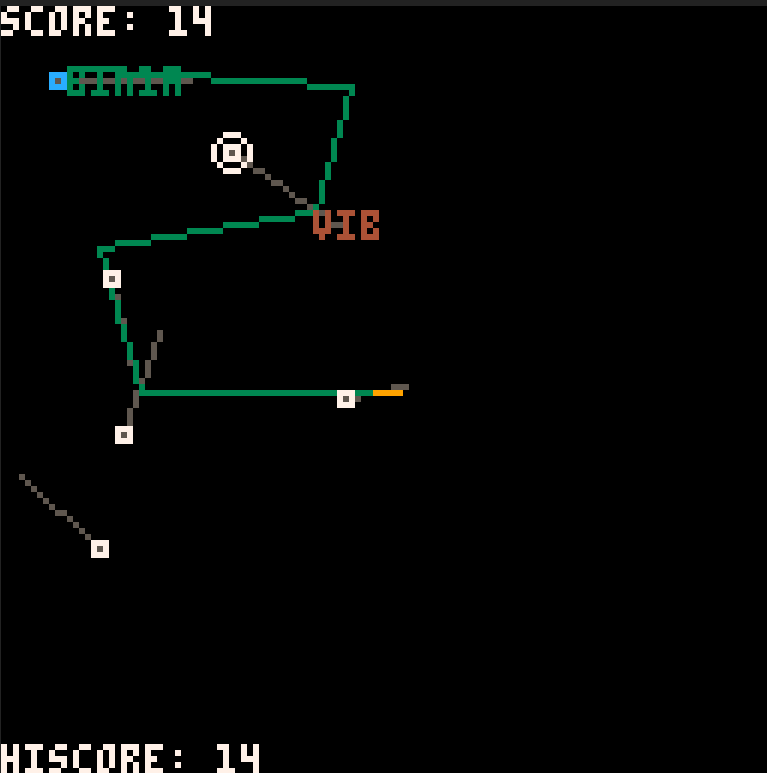A series of Neovim Plugin Development introduction articles, using Fennel as the programming language to explain Lisp, FP, and advanced programming ideas.
In the AI era, developers need to think about new development paradigms: "AI helps us quickly generate code, but debugging and verification still require active developer intervention." This series of articles will start with Neovim + Fennel, guiding readers into the new world of "Interactive Development" and "Functional Programming".
Content includes:
- Fennel Language: Syntax, commonly used libraries.
- Lisp Thinking: S-expression editing, interactive development.
- Functional Programming: Pure functions, practical techniques like map/filter/reduce.
- Neovim Plugin Development: From simple scripts to complete plugins.
- Patterns and Principles: The rules that guide us to success.
Let's explore smarter and more elegant ways of program development together in the AI era.
The completion of this article series is largely inspired by my work at Gaiwan and LambdaIsland.
This series was first published in Taiwan, and then I translated the original Traditional Chinese version into English using markdown-translator.
If you have any thoughts after reading this series, feel free to reach out to me.
- Preface: What Should You Learn After AI Accelerates Coding?
- Software Development in the AI Era
- Fennel Lowers the Entry Barrier for Interactive Development / Functional Programming
- Summary
- Fennel Brief History and Development Environment
- From Individual to Community: The Birth of Fennel
- Development Environment - Installation
- Development Environment - Plugin Introduction
- Development Environment - Automatic Formatting
- Interactive Development
- S-expression Editing
- Summary
- Fennel Language Crash Course—Lisp Syntax
- Let's Talk About Syntax First
- Summary
- Fennel Language Crash Course—Core Syntax
- Functions
- Local Variables
- Numbers and Strings
- Containers
- Loops
- Iteration
- Conditional Statements
- Summary
- Fennel Language Crash Course—Lua
- Lua and Minimalism
- Lua Overview
- Other Uses of Lua's Table
- Fennel Syntax Extensions for Tables
- Summary
- Fennel Language Crash Course—LuaRocks
- The Problem of Multiple Interpreters
- LuaRocks
- Summary
- Fennel Language Crash Course—nfnl Library
- nfnl Examples
- Clojure-style Programming
- Summary
- Lisp In-depth—Interactive Development
- Other Commands for Interactive Development
- Leveraging Interactive Development
- Summary
- Lisp In-depth—S-expression Editing
- Parenthesis Pairing Issues
- Parenthesis Editing Issues
- Navigating and Editing within the Syntax Tree
- Summary
- Lisp In-depth—Macro
- What Macros Does Lisp Provide?
- Fennel's Reader Macro
- Reconsidering Lisp Macros
- Summary
- Lisp In-depth—Data-Oriented Programming
- The Troubles of Tree Traversal
- Clojure's Unique Flavor
- Summary
- Demystifying Functional Programming (FP)—High-Level Semantics
- Why is FP considered a high-level semantic? Starting from Accounting
- Summary
- Demystifying Functional Programming (FP)—The Challenge of Definition
- What is Functional Programming (FP)? What is its definition?
- Separating Concept from Implementation
- Summary
- Demystifying Functional Programming (FP)—Common Mechanisms
- Higher-Order Functions
- Value Copying
- Summary
- Demystifying Functional Programming (FP)—Advanced Topics
- Functional Programming Idioms (FP idioms)
- FP and Code Reuse (code reuse)
- Summary
- Neovim Plugin Development—Getting Started
- Why the Learning Failed
- A Relatively Reasonable Learning Strategy
- Neovim Runtime
- Summary
- Neovim Plugin Development—Hello World
- Hello World Plugin
- Summary
- Neovim Plugin Development—Standard Plugin
- Plugin Development
- Module Imports
- Summary
- Neovim Plugin Development—How to debug?
- Inspecting Internal State
- Internal Execution Order
- Summary
- Project Discussion—auto-conjure
- Problem Overview
- Solution Architecture
- Summary
- Project Discussion—Conjure Piglet Client
- Problem Overview
- Solution Architecture
- Summary
- Project Discussion—WebSocket
- Problem Overview
- Solution Architecture
- Summary
- Project Discussion—CBOR
- Problem Overview
- Solution Architecture
- Summary
- Project Discussion—Fennel's Jump to Definition
- Problem Overview
- Solution Architecture
- Summary
- Project Discussion—Tree-sitter Behind Jump to Definition
- Problem Overview
- Solution Architecture
- Summary
- Patterns and Principles—Bottlenecks and Improvements
- Theory of Constraints
- The Biggest Constraint in the Age of AI
- Summary
- Patterns and Principles—Uncertainty
- Ways to Respond
- Related Theory
- Summary
- Patterns and Principles—Complexity
- The Way to Respond
- Related Theory
- Summary
- Patterns and Principles—Modification Propagation
- The Way to Respond
- Related Theories
- Summary
- Patterns and Principles—Tacit Knowledge
- The Way to Respond
- Related Theories
- Summary
Copyright @ Laurence Chen
Licensed under the term of the Creative Commons Attribution 4.0 International License.
.png)




